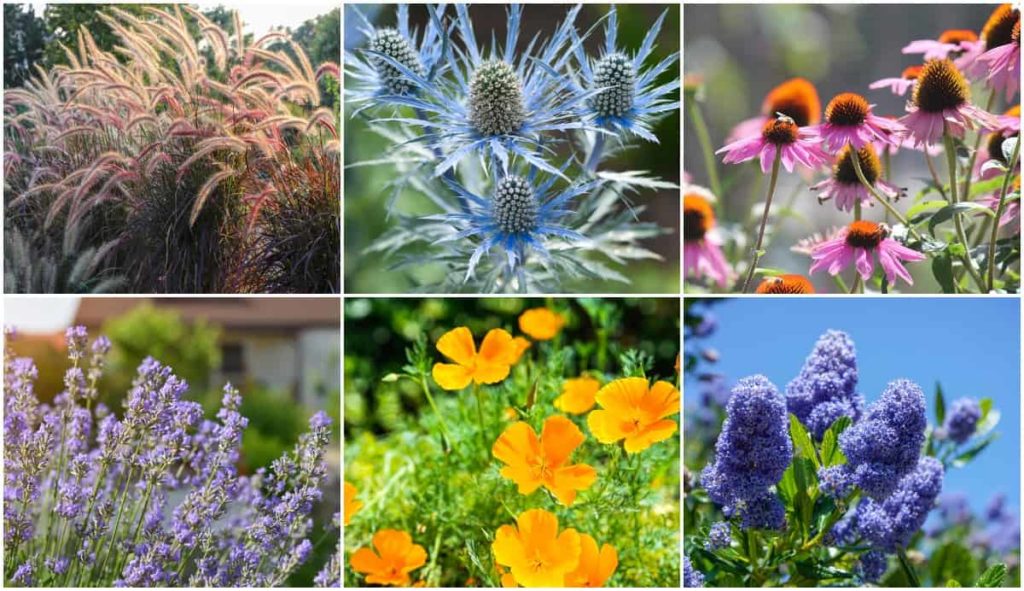
Isn’t that the goal, to be completely low maintenance and look great while you’re at it?
It’s no longer function, style, fashion, or trend. If we want to have beautiful blooming backyards, choosing tough, self-reliant plants that don’t require excessive water is an absolute must.
Xeriscaping, also known as gardening in a water-efficient conservational way is a way to keep things healthy and beautiful without putting a strain on dwindling water supplies.
The seasonal drought conditions in the USA are expected to be here to stay. Why not play along by finding ways to be gorgeous, even under duress?
Strong AND Beautiful
Luckily, with some conscientious planning and determination, we can find some absolutely gorgeous plants that require little moisture.
Many plants have moisture reserving structures built into their anatomy. Succulents and cacti, for example, hold extra moisture in their plump, fleshy leaves.
Other plants have deep tap roots that can reach cool, damp earth even when the surface is dry and crispy. While other plants have moisture-holding capabilities in thick root structures such as bulbs, corms, and rhizomes. These adaptations help them look their best during times of scarcity, especially drought.
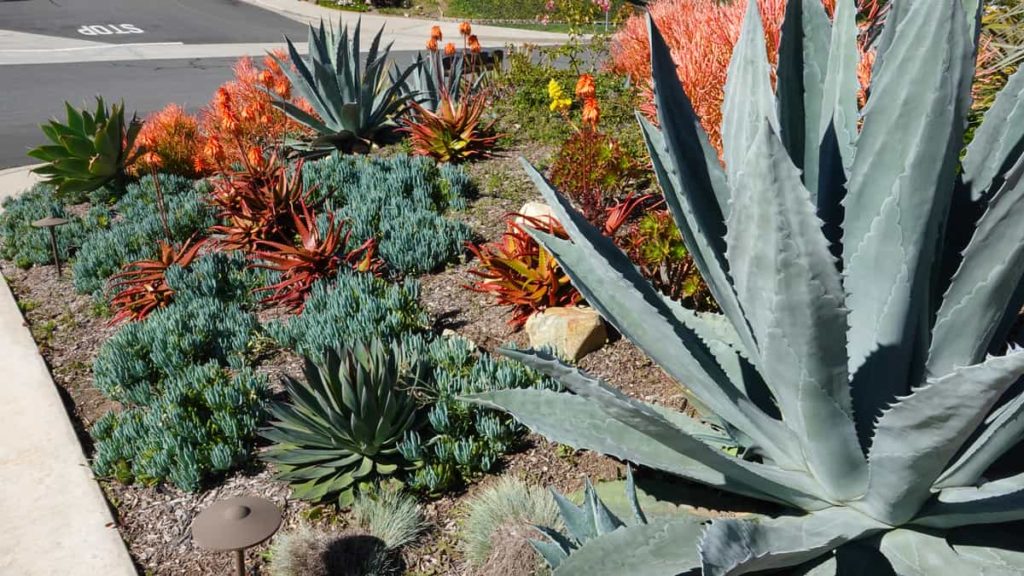
Expect Extended Seasons of Dryness
Even the toughest, drought tolerant plants need a chance to adapt. Just about any plant, taken straight from the greenhouse or garden center and plunking it in during the driest heatwave, has little chance of survival.
Planting drought-tolerant plants in spring or fall when water is plentiful, gives the plants a chance to build up their reserves for times when water is harder to come by.
Think About Drought Differently
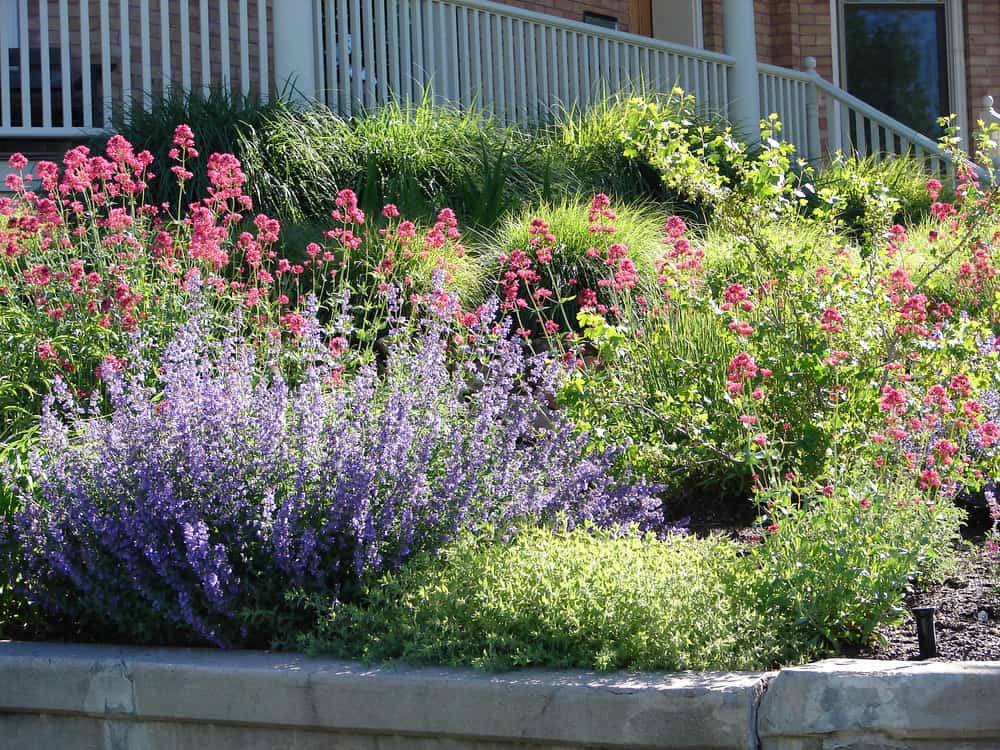
What if, during times of drought, we didn’t have to worry that our plants might be suffering? Interestingly, many plants are already prepared for the dry season.
Think about those stunning spring-flowering bulbs like daffodils, tulips, lilies, and hyacinth. Where do they go during the heat and dryness of summer? That’s right. They’ve done their beauty duty for the year and are happy to wait out the drought until water is abundant for them again next spring.
Thirsty Plants – Special Care
Conversely, the gorgeous and stunning summer-flowering bulbs, such as gladioli and dahlia, are thirsty darlings during the hottest and driest season. It may be best to treat them as such. Grow them in special water-conserving soil in pots with water-holding capacity. This way they can thrive with their needs met without wasting a drop of precious H20.
Alternatively, use water conserving methods for thirsty plants. You might group thirsty plants together. Or use moisture-conserving mulches, which also help keep the competition from weeds down as well.
Watering During Drought
We’ve all done it. When the water restrictions go on, we tip toe through the garden early in the morning hiding from our neighbors, so we don’t get busted taking care of our lovely blooming darlings.
If we are lucky, water restrictions go on alternate days. It is much better to water with a deep soak on your watering day rather than light overhead water anyway. Plus, your plants will send their roots down as deep as the water goes, making them more resilient during water shortages too.
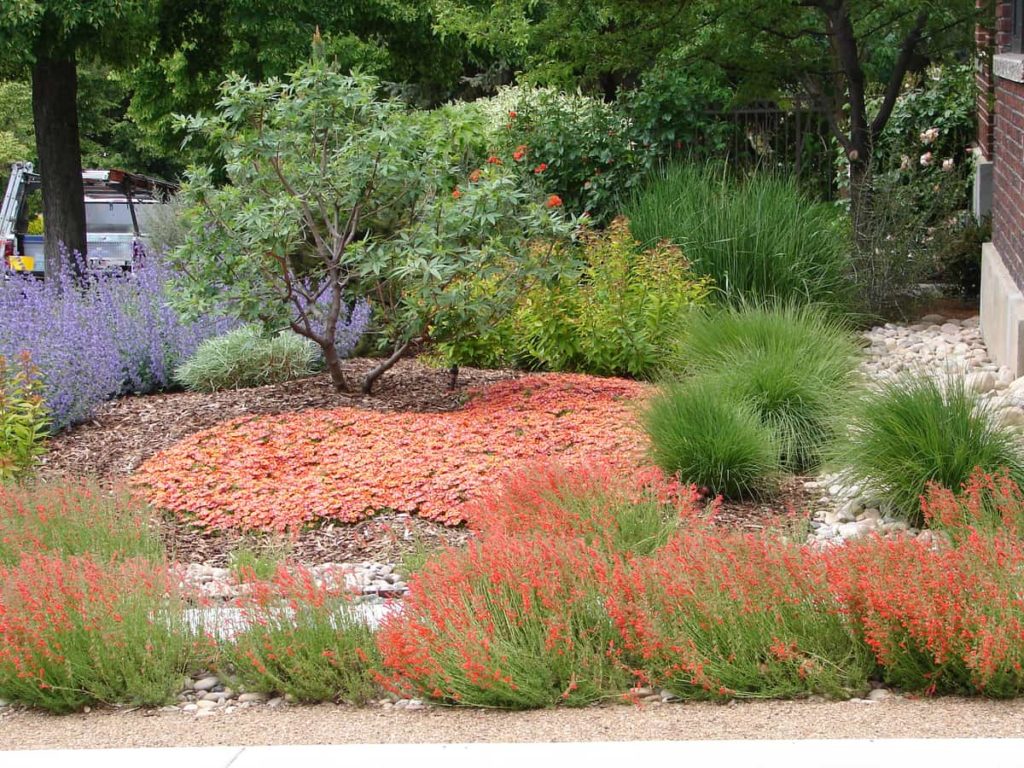
Drought Tolerant Plant Searching Secrets
- One little secret, after a dry spell or heatwave, look around your own neighborhood. Any plants that still look great after these long dry spells are wonderful indicators of plants that hold their own with lack of water in your area.
- Next, choose plants that are known for their drought tolerance. Cacti and succulents come in stunning variations. Plants like agave or yucca can make unique, stand-alone features in a low-water garden. Succulents such as sedums and hens-and-chicks can make incredible visually interesting ground covers, borders, or impactful parts of a rock garden.
- Plants native to your area are often incredibly adaptable to local weather changes and extremes. For many plants, this includes drought as well. Finding out about plants native to your area is a great way to start. Often these plants are not only water-wise, but they often nurture other aspects of the ecosystem as well.
- Similarly, plants native to areas that are famously dry, such as the Mediterranean basin, will probably survive drought conditions elsewhere. The list below holds a few of the more drought tolerant beautiful and delicious Mediterranean herbs, known not only for their toughness but also their increased flavor during dry times.
- And lastly, what plants keep their showstopping attributes even when water is scarce? This is where the following list really comes into play. These plants are not only stunning during drought, but you also never even see them break a sweat! They make drought tolerance look easy, in fact, most of them prefer it.
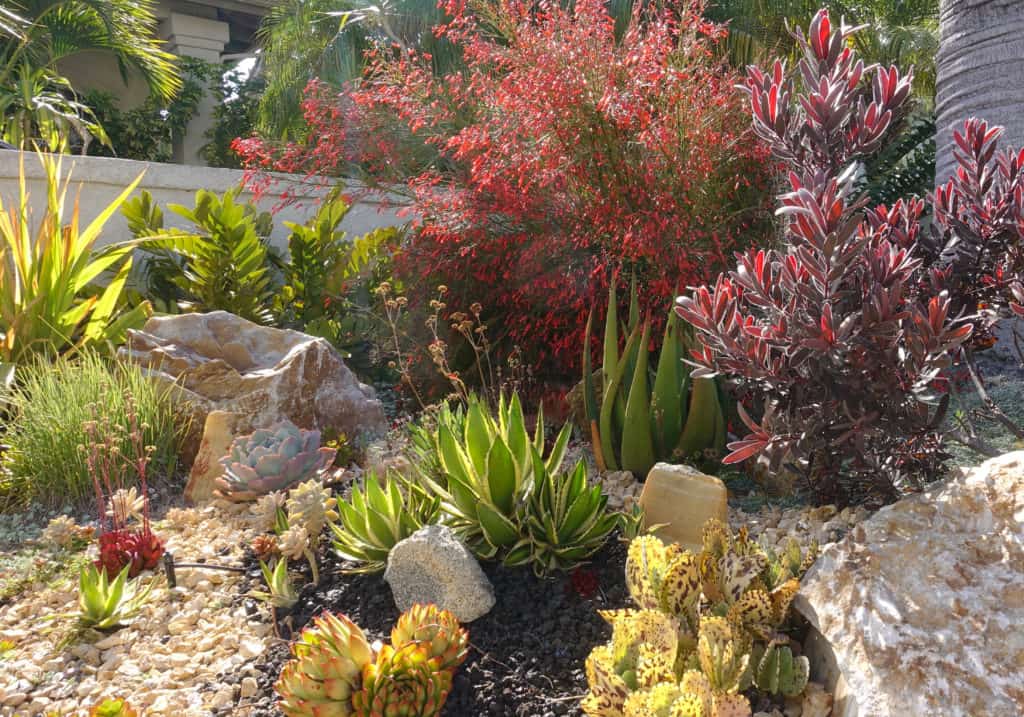
Drought Tolerant Cacti
1. Adam’s Needle (Yucca)
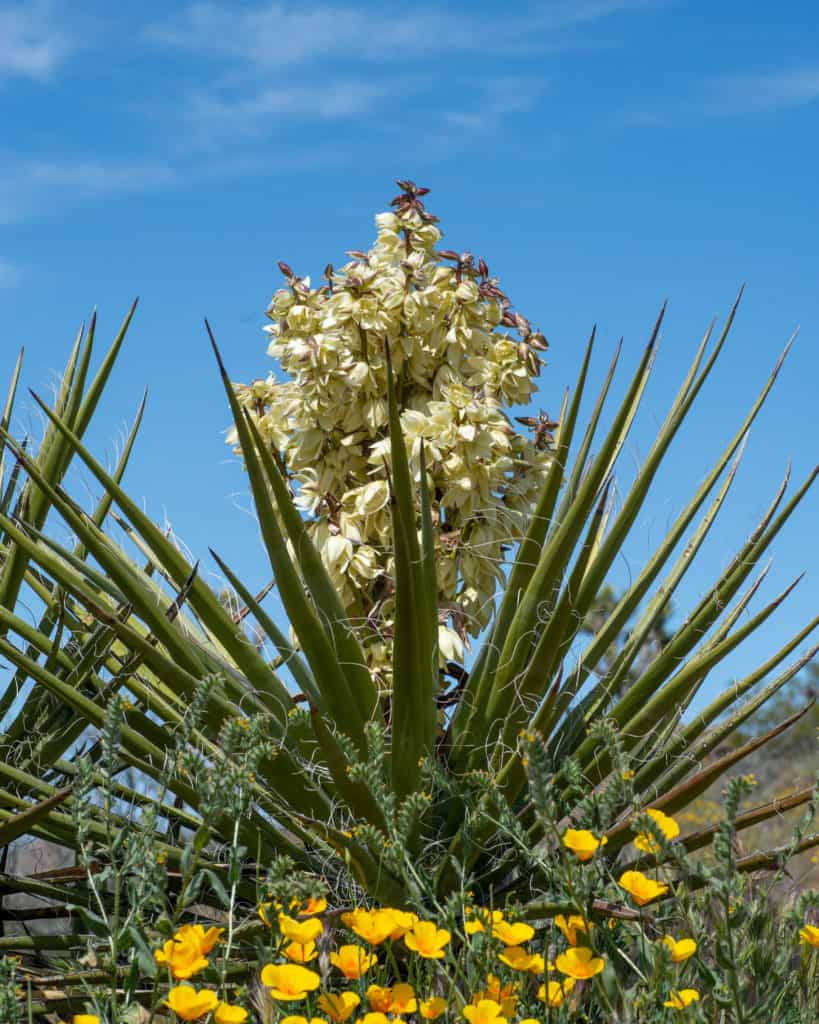
Yucca makes the statement, “Hot and Loving It”. These plants shine in full sun and well-draining soil.
Their long tap roots see them through the hardest droughts in zones 4-5 to 10, but make sure they never sit in poor-draining heavy soils, especially in cold wet areas.
Their interesting, spiked foliage and spectacular giant flower stalk make this drought-loving cactus a centerpiece of any dry-land garden scape.
2. Agave (Agave)
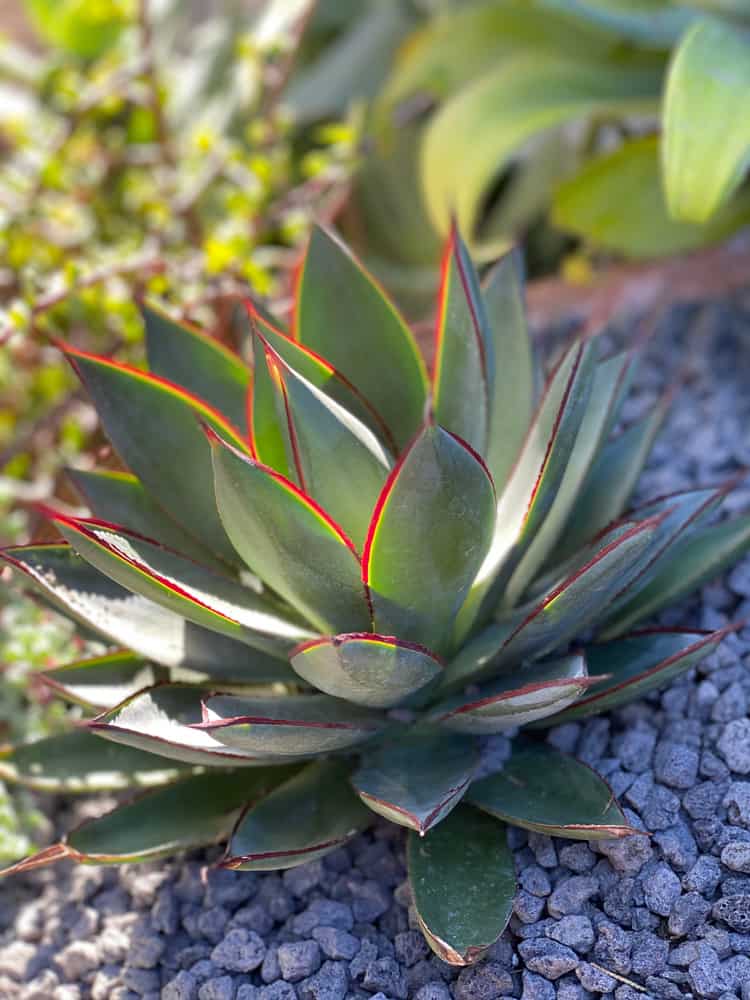
Also known as the Century Plant, agave plants do more than make tequila. Native to the Americas, agave species are found in arid and even tropical areas.
Hardy to zones 9 to 11, agave surprisingly have shallow rhizomatous roots for soaking up every drop of available moisture from rain, condensation, and dew.
They grow to form large, spiked, strong rosettes with rare enormous flower spikes that may appear only once in 60 years.
3. Prickly Pear (Opuntia)
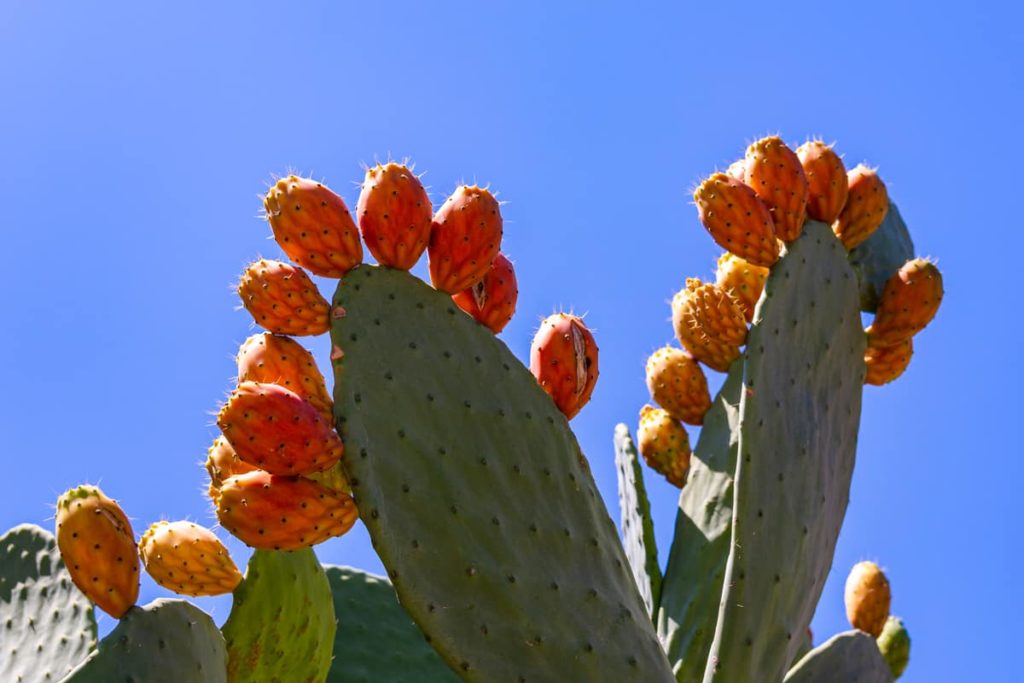
This funky looking cactus makes beautiful white, yellow, or red flowers in spring which lead to unique fruits in fall.
Both the leaves, (nopales), and fruit, (tuna) are edible.
Prickly pear is incredibly well adapted to dry conditions from its succulent water storing ability to its waxy sun protective skin. This amazing desert cactus is hardy in zones 4 to 9.
Drought Tolerant Succulents
4. Moss Rose (Portulaca grandiflora)
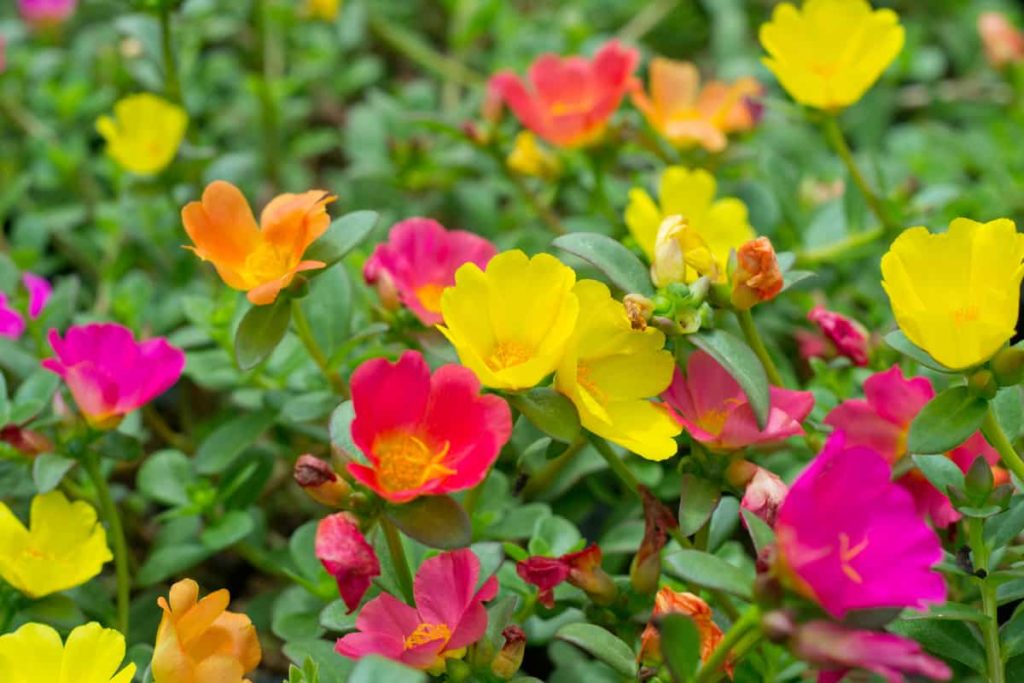
The stunning, nearly florescent blooms of portulaca are a favorite bedding plant for hot, dry, full sun locations.
The thick succulent leaves allow this little beauty to survive in places most other bedding plants would all but wither away.
In perfect conditions, moss rose will freely seed itself for blooms in future hot dry seasons as well.
5. Living Stones (Lithops)
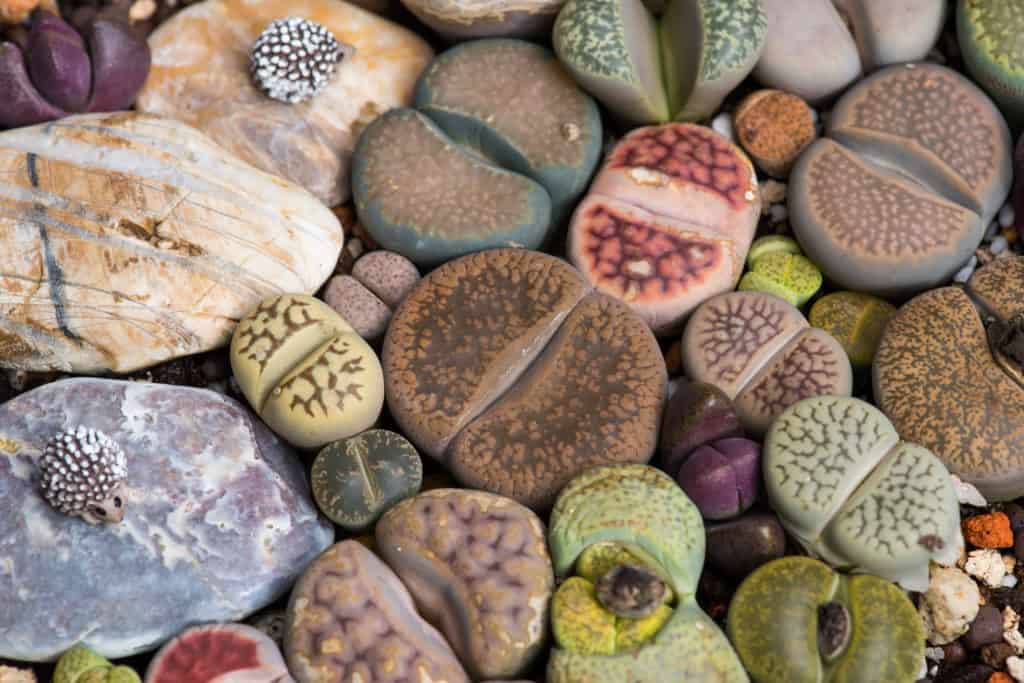
This incredible little plant recedes back into the ground during phases of low water. Talk about adaptability to drought!
A gorgeous use for these water-wise plants is in small succulent displays. Hardy in zones 9 to 12, living stones might be grown in containers to bring inside during cold temperatures.
6. Hen and Chicks (Sempervivum)
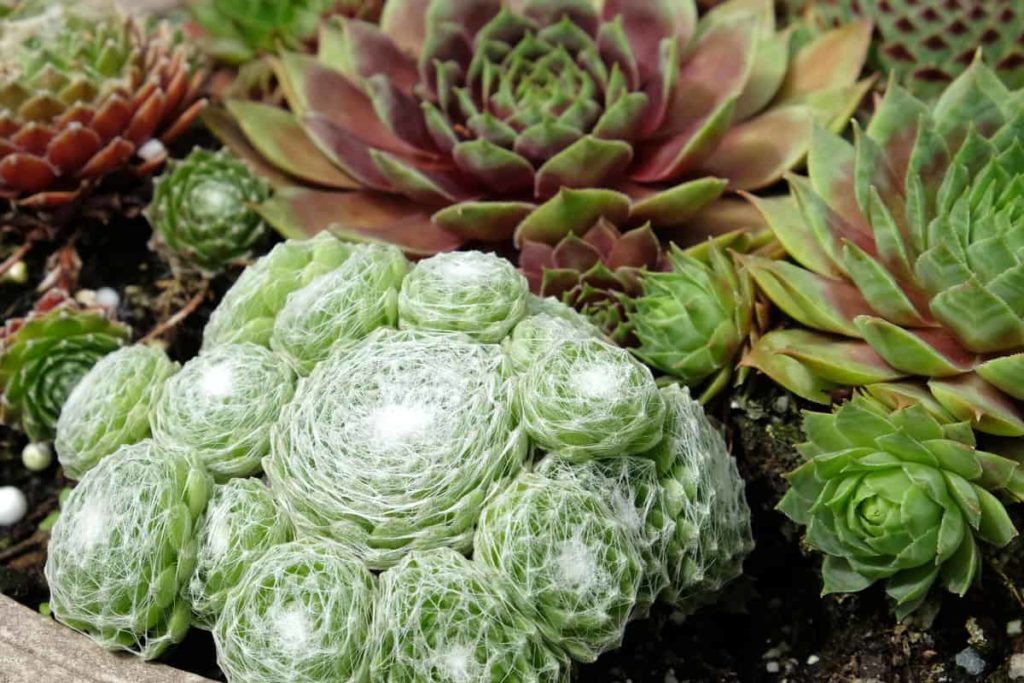
There is something romantic about the low-growing, ground hugging rosettes that grow slowly, filling in every spare inch in rock gardens, borders, cervices of walks, stone paths, and rock walls.
Hen and chicks are hardy in zones 3 to 9, loving full sun and poor soils that are well draining.
7. Stonecrop (Sedum)
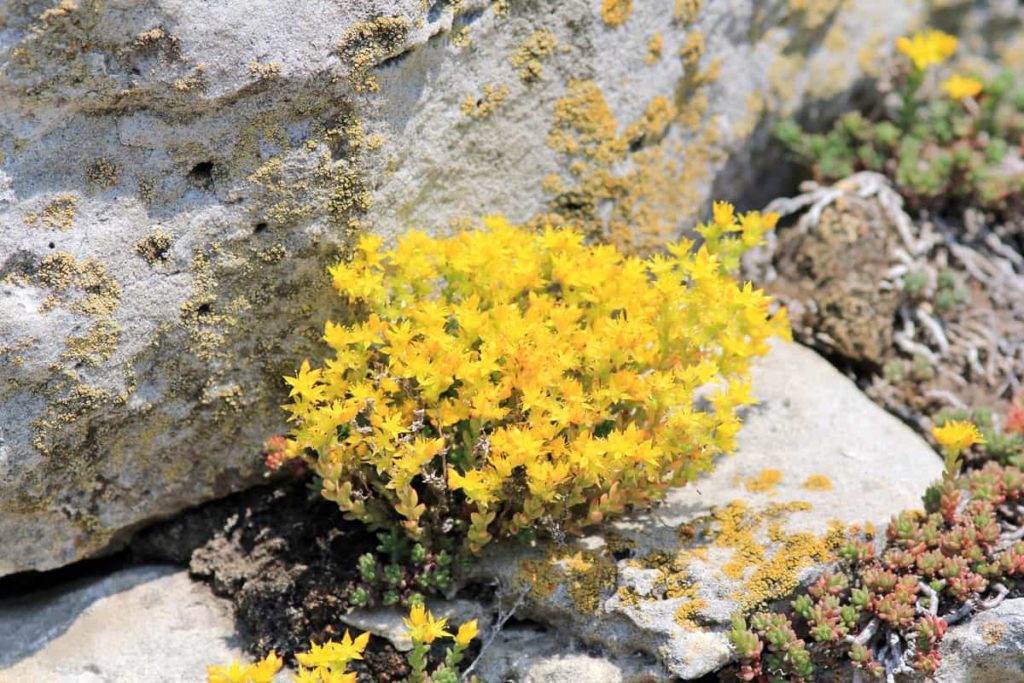
The variety in this wonderful genus of drought-tolerant plants is astounding. From clump-forming, upright, fall blooming types that are favored by bees to ground crawling, draping, creeping forms, there is a sedum to meet any dry landscape need imaginable.
Hardy in zones 3 to 11, there is a stonecrop fit to use as a glowing groundcover, rock garden specimen, or low-maintenance border in any blooming garden.
Drought Tolerant Herbs
8. Lavender (Lavandula)
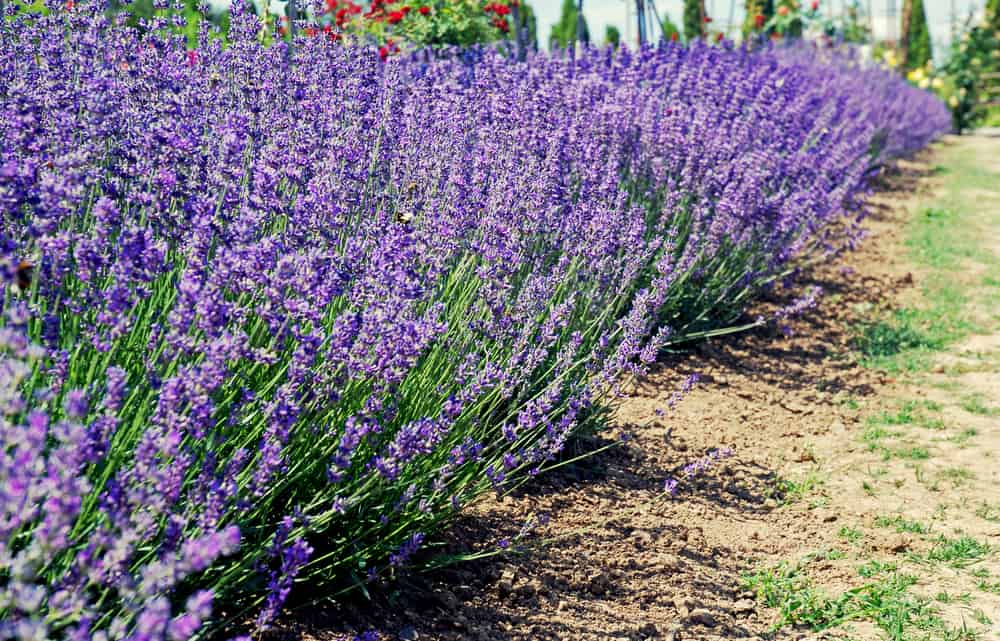
Known for its delicious, calming, and cleansing fragrance, lavender is exceptionally drought-tolerant once established.
Native to the dry, sandy landscape of the Mediterranean and hardy in zones 5 to 8, lavender requires little moisture after its first year of life.
The strong, fragrant silvery foliage makes the perfect backdrop to the abundant blue-purple flower spikes.
Read more about why you should plant a lavender hedge here.
9. Artemisia (Artemisia)
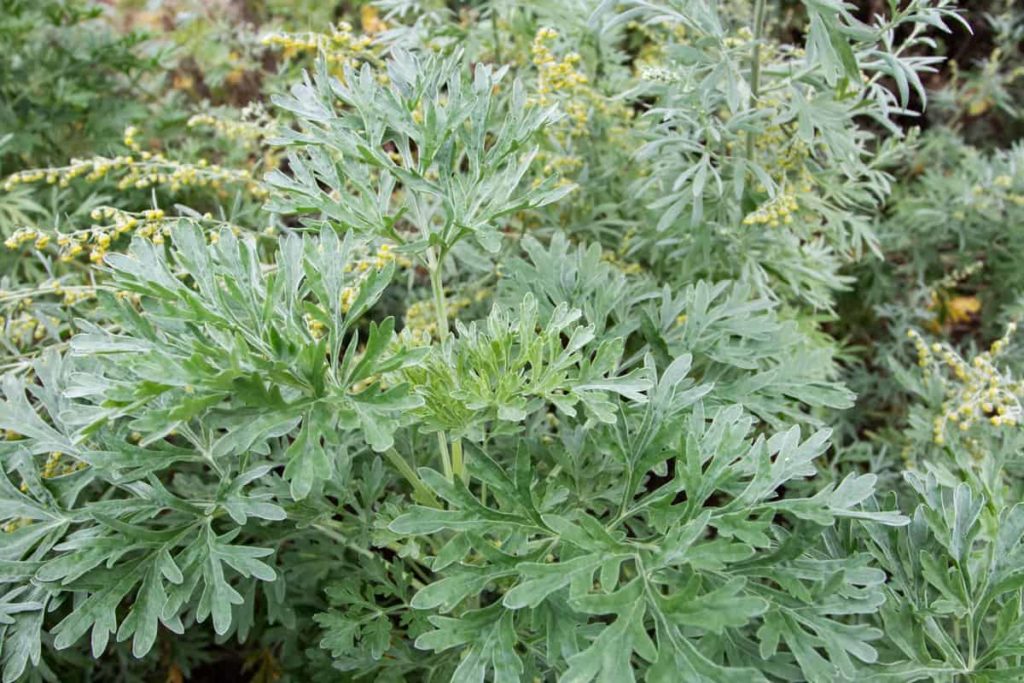
A large genus of drought-tolerant plants, artemisias include hardy shrubs and herbs such as tarragon and sagebrush.
In the ornamental garden, popular varieties are silver mound and wormwood.
In general, the intricate leaf structures and silvery gray foliage are aromatic, loving full sun in zones 4 to 8.
Tough and beautiful artemisias don’t break a sweat and companion gorgeously with other drought-tolerant champions such as succulents, and ornamental grasses.
Silver mound and portulaca was always a favorite pair in my mom’s garden.
10. Rosemary (Rosmarinus officinalis)
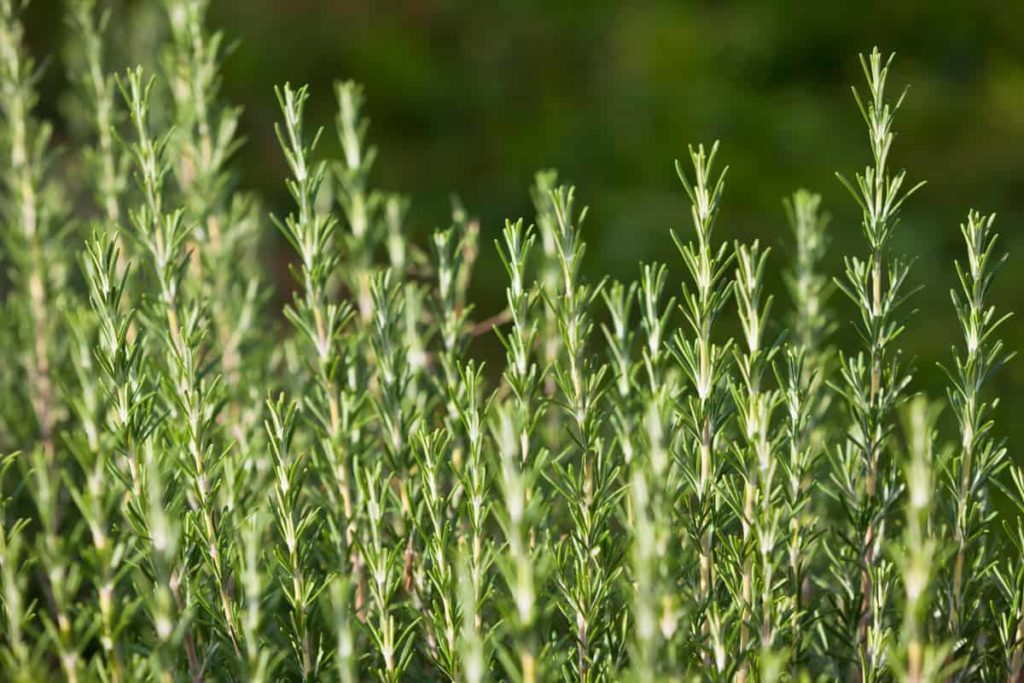
To live in an area where this wonderful aromatic, pine-needled plant may grow in a hedge to 5 feet tall is a dream many northern gardeners dream about!
Rosemary is hardy zones 6 to 10, may need some winter protection and thrives in full sun in well-draining soils. Not to mention, it is delicious and can grow in a pot for culinary use year-round.
11. Yarrow (Achillea millefolium)
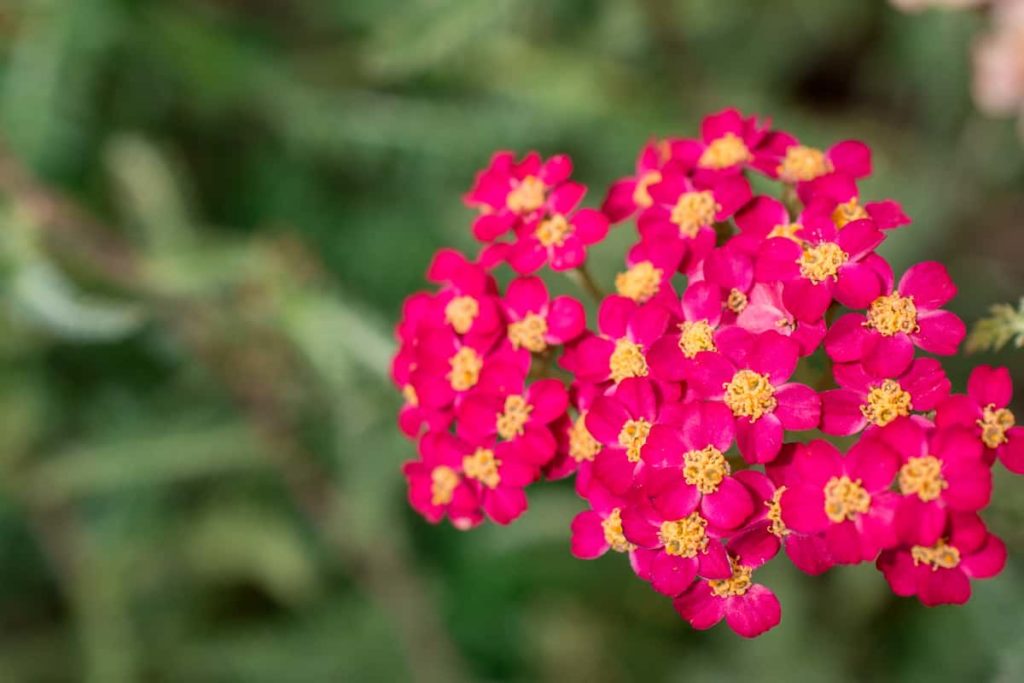
Is there a list of plants that Yarrow does not fit on? This native, super resilient, long-blooming perennial herb has surprising potential health benefits to match its beauty.
It blooms in a variety of colors ranging from pale through to hot pinks, whites, and yellows all through summer’s heat.
Incredibly easy to grow in hardiness zones 3 to 9, yarrow holds its own in the rock garden, as a groundcover, in the perennial border, as well as a helpful edging plant in the vegetable or herb garden.
Yarrow also makes an interesting, super soft, drought-tolerant lawn alternative.
12. Sage (Salvia)
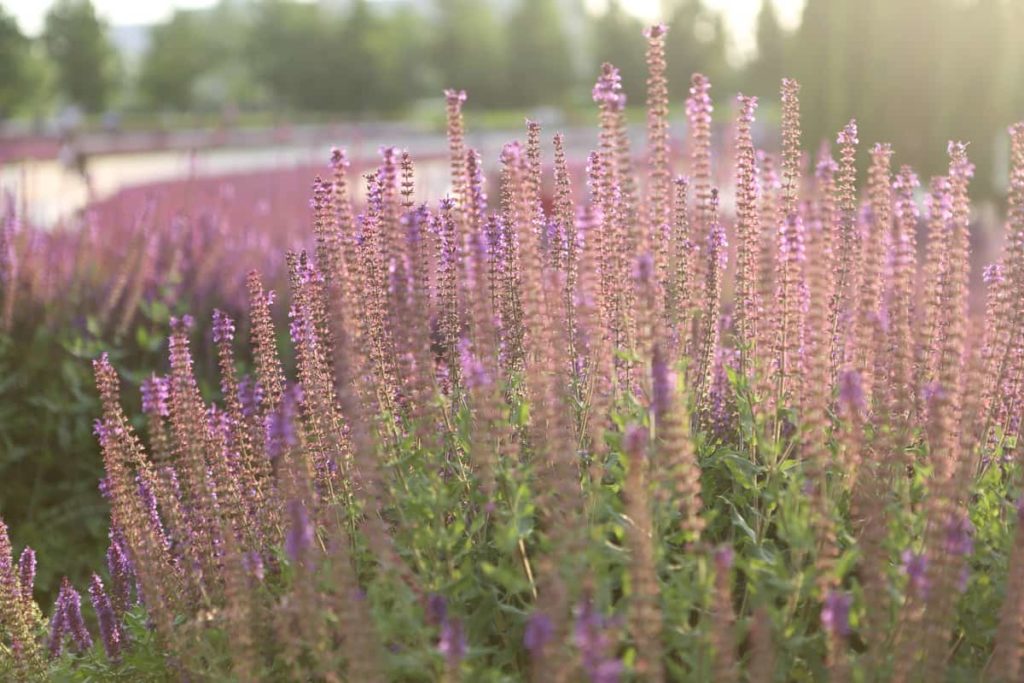
Drought tolerance and spikes of colorful late season blooms ties this giant 1000 species strong genus of plants together.
Generally hardy in zones 5 to 10, nothing makes xeriscaping look and feel as good as using a variation of salvias to spruce things up.
Be sure not to overwater or place in a damp waterlogged area, and salvias of the shrub, perennial, or annual variety will reward you with ease of care, aromatic foliage, and striking spikes of colorful blossoms.
13. Creeping Thyme (Thymus praecox)
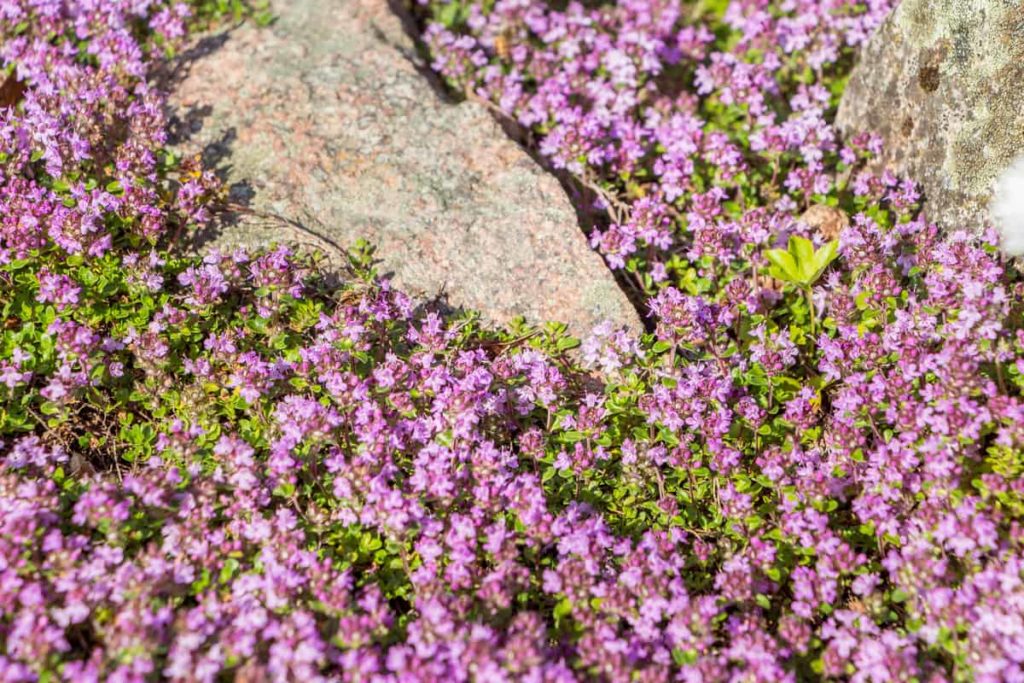
To choose just one variety of thyme does seem slightly scandalous, while most plants of the Thyme genus will thrive in drought condition, creeping thyme is especially good looking in tough times.
It too is native to the hot, dry Mediterranean area, loving full sun and well-draining soils in zones 3 to 8.
Creeping thyme hugs and forms to the ground, displaying its silvery green foliage as a soft carpet. Its rosy bloom is beyond imagination.
An incredible use for this lovely aromatic plant is as a water-wise lawn substitution. It can also be planted in stone paths. Creeping thyme is magical to walk on as the gorgeous aroma follows your steps.
Drought Tolerant Ornamental Grasses
14. Feather Reed Grass (Calamagrostis acutiflora)
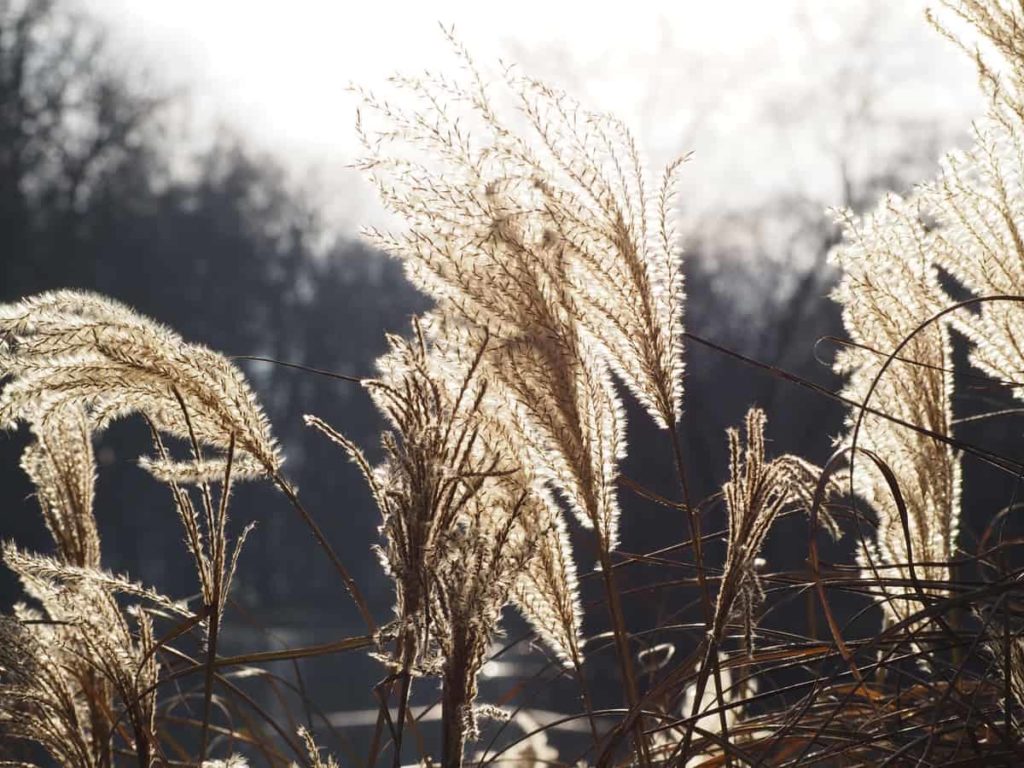
Drought tolerance in heavy clay is a challenge for any water-wise garden. Feather Reed Grass hits this target.
Hardy in zones 4 to 8, feather reed grass makes an incredible backdrop or mass planting and toughs out the dry season with grace.
15. Fountain Grass (Pennisetum setaceum)
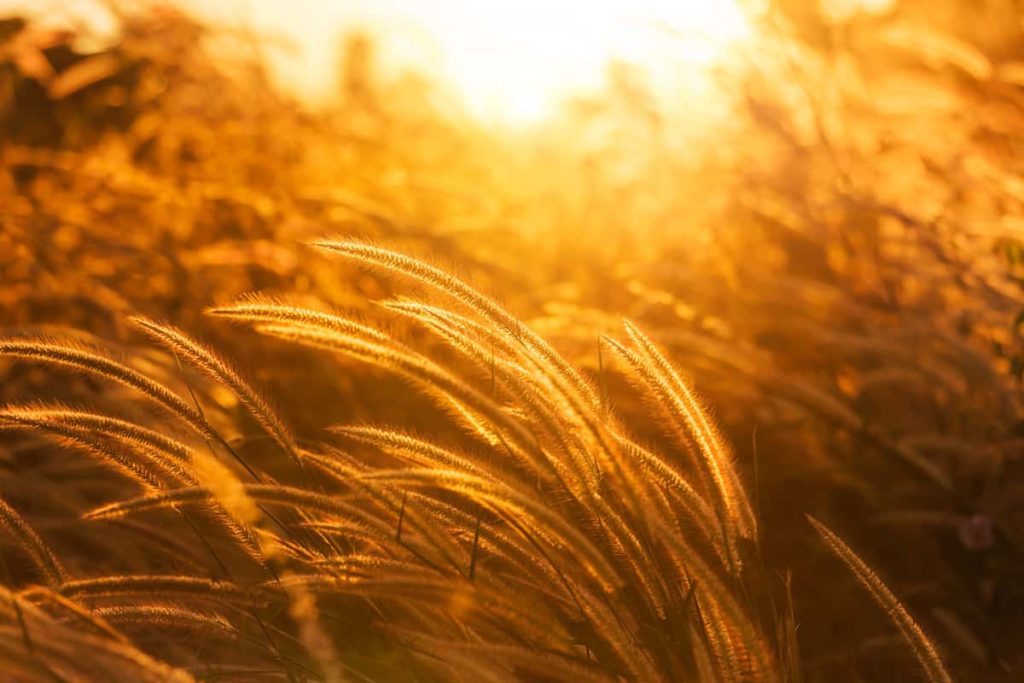
The clump-forming, gracefully arching stems of fountain grass create a whimsical environment. Several varieties are available in this low maintenance, water wise plant.
Often found with purple to red leaves, this plant performs best in full sun, well-draining soils in zones 9 to 11.
Read More: 10 Prettiest Ornamental Grasses For Your Landscape
Drought Tolerant Vines
16. Sweet Potato Vine (Ipomea batatas)
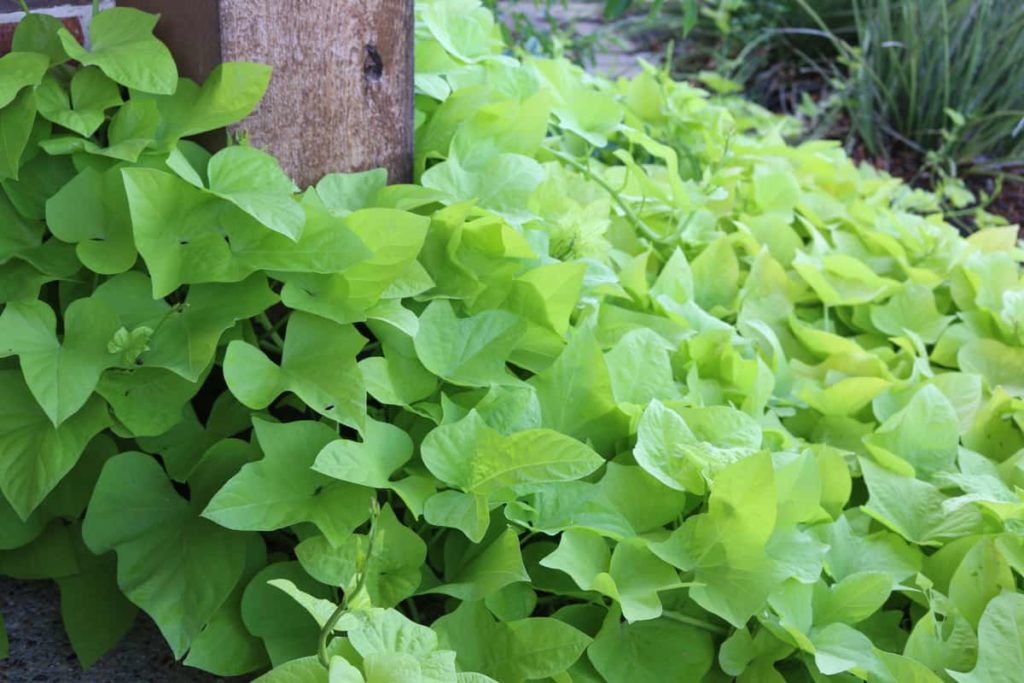
Planted in full sun, these low maintenance vigorous vines create a lush tropical feel that people won’t believe are part of a water-wise planting scheme.
Foliage is lush, climbing or trailing, (or both) in a variation of colors from purple, bronze, spring green, and chartreuse.
Often grown in containers or as bedding plants, sweet potato vines are drought tolerant and hardy in zones 9 to 11.
17. Trumpet Vine (Campsis radicans)
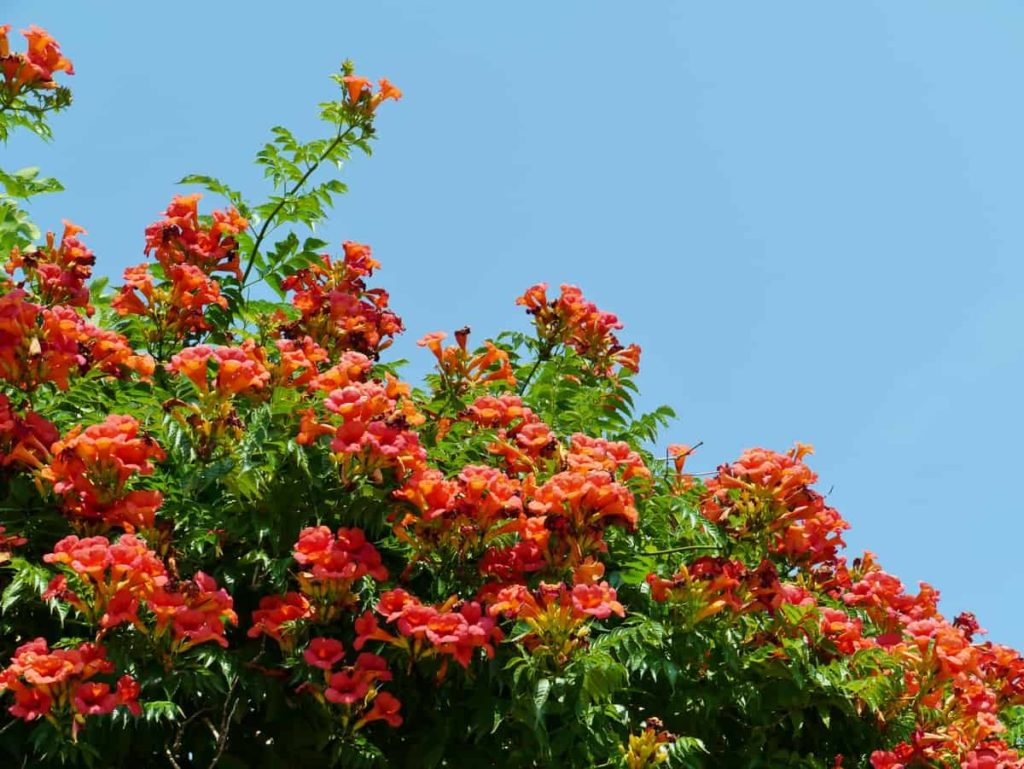
Another showstopping vine that will surprise even the most fastidious water-conscious observer with its tropical looking, showy, red-orange, tubular flowers.
Trumpet vine is vigorous, and maintenance is often limited to pruning it back.
They will perform even in a bit of shade protection, especially in hot areas. But these long-lived vines are hardy in zones 4 to 9, preferring full sun and require little extra water once established.
18. Bougainvillea (Bougainvillea)
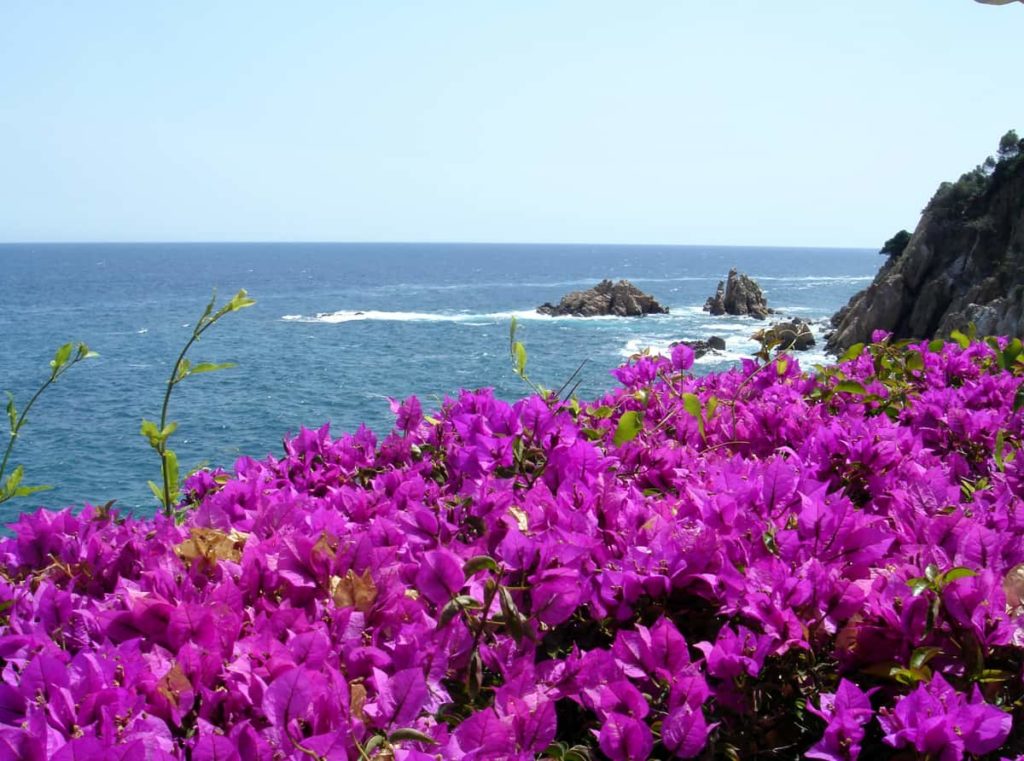
Perfect for a drought-tolerant barrier plant, bougainvillea displays a tropical floral color show ranging from peachy yellow through red to purple.
Loves it hot, dry, and well-draining, bougainvillea thrives on neglect in zones 9 to 11.
Drought Tolerant Herbaceous Perennials
19. Snow in Summer (Cerastium tomentosum)
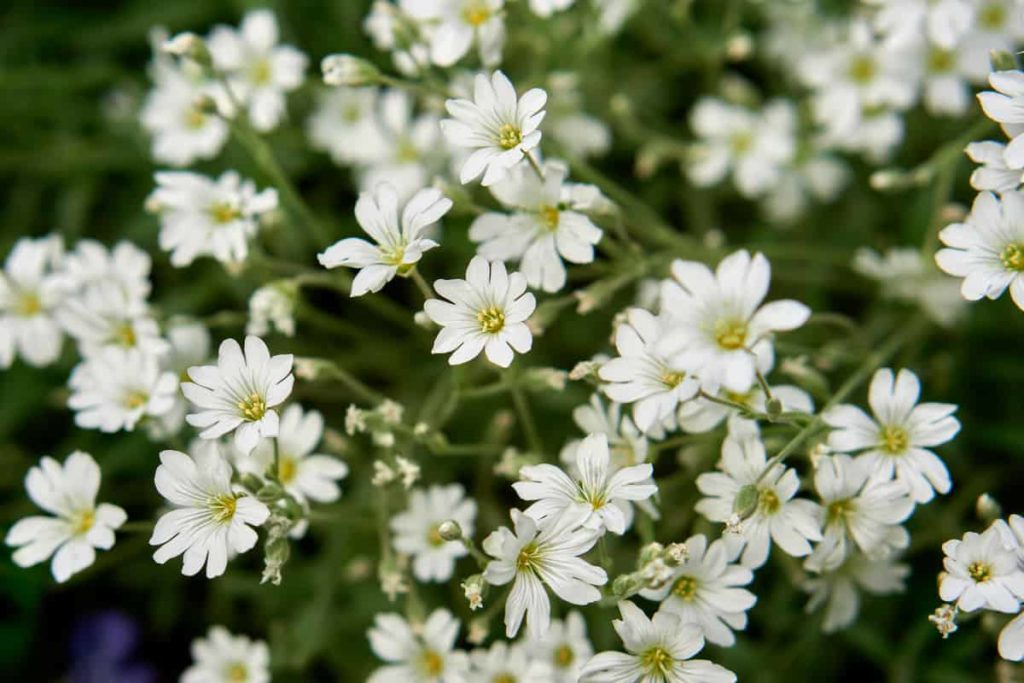
This incredibly tough groundcover goes toe to toe with plants like yarrow in terms of toughness and drought tolerance. Some may even consider snow in summer to be weedy.
In hardiness zones 3 to 7, with its woolly textured silver foliage and dancing single simple white flowers, snow in summer requires nothing in terms of maintenance.
It works as an excellent ground cover and can even compete out some difficult weed contenders including bind weed.
20. Blanket Flower (Gaillardia)
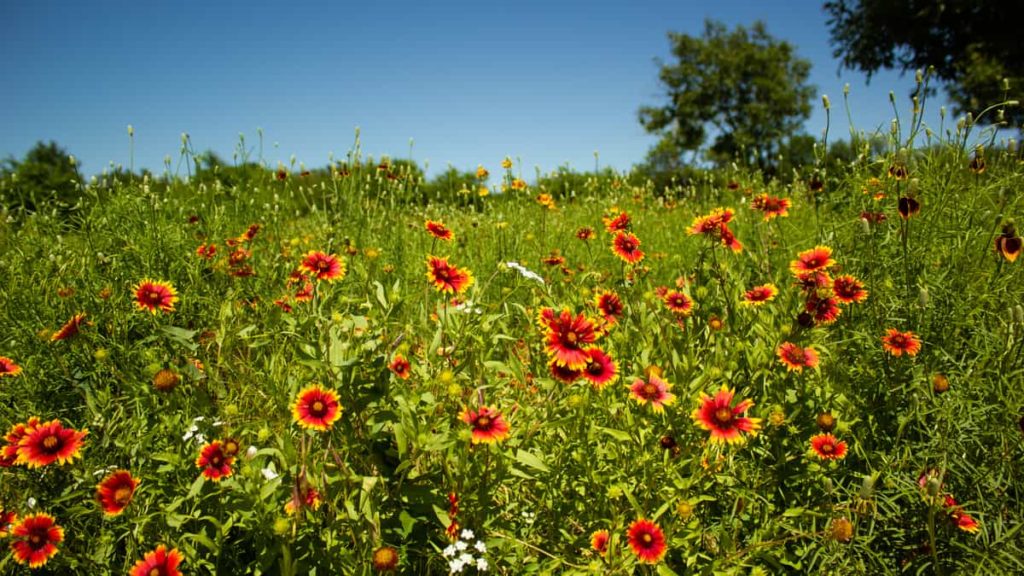
Once established, blanket flower will do just that. They are named for their previous exhibitions of blanketing the prairies of North America with their red, orange, and yellow flame colored daisy-like blossoms.
They are still found in the wild, but many ornamental varieties have been tamed for the home garden.
Gaillardia prefer full sun, poor soil, and beautifully tolerate heat and drought in zones 3 to 10.
21. Coneflower (Echinacea)
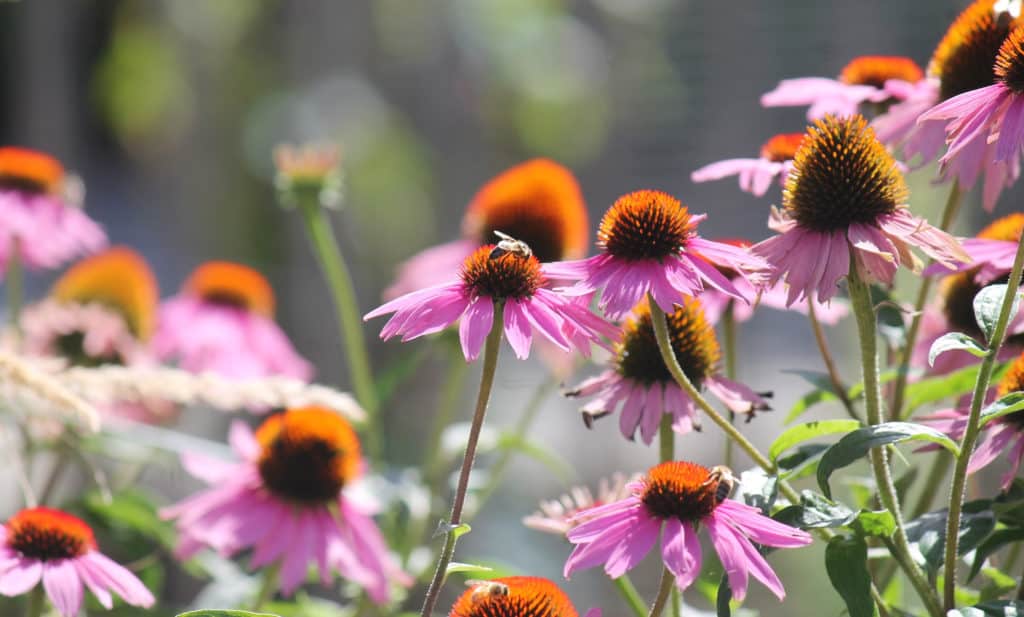
Another easy-going native plant, coneflower’s popularity continues to bloom.
New varieties and color combinations are increasingly on the rise where the familiar laid back light pink to purple variety never goes out of style.
This clumping, drought-tolerant summer bloomer stands up and looks wonderful, even when facing heat and lack of water.
Preferring full sun, coneflowers perform in most soil types, as long as they drain well in zones 4 to 9.
22. California Poppy (Eschscholzia californica)
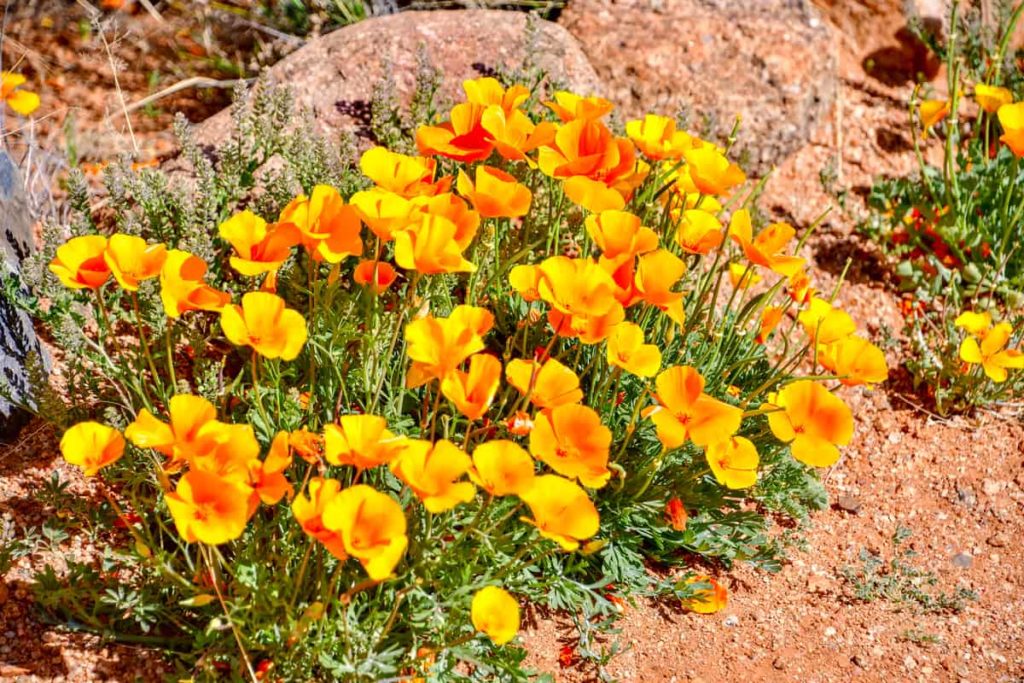
Hardy in zones 7 to 11, California poppy acts as an annual and happily reseeds itself in cooler climates.
The bright orange blossoms untwist themselves most exuberantly each morning. They grow in colonies creating virtual oceans of color in the right arena.
These little lovelies grow quickly and are usually blooming before you know it. Incredibly drought tolerant, they love full sun with sandy well-draining soils.
23. Sea Holly (Eryngium amethystinum)
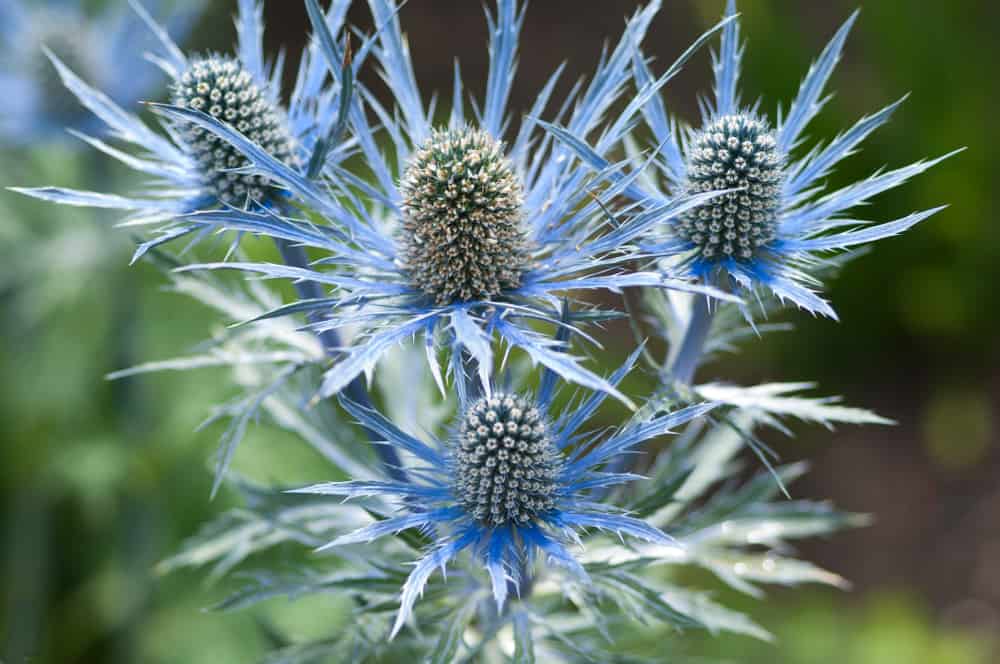
A fading reminder of well-loved gardens from times gone by, sea holly may be the only survivor of neglected and unwatered old garden spaces.
The unique flower heads and spiked foliage are an interesting shade of silvery blue.
Thriving in hot, well-draining soils, sea holly survives just about anything in zones 4 to 9.
Drought Tolerant Shrubs
24. Juniper (Juniperus)
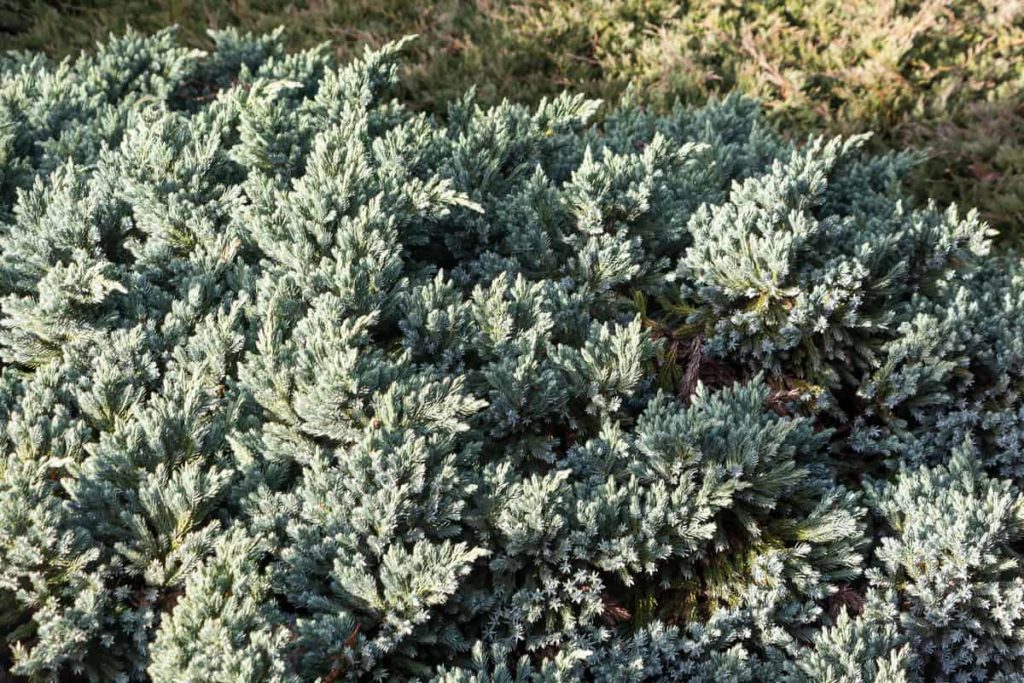
In the driest of grass-land forest regions, juniper will be one of the only shrub species to find.
Even in the wild, they come in upright shrubs, carpet-making groundcovers, and even tall tree varieties. They make pretty silver berries and may have scale or needle-like foliage in colors ranging from the deepest forest green to nearly translucent blue.
From zones 2 to 9, they are renowned for their versatility in the landscape as well as their toughness and drought tolerance.
25. California Lilac (Ceanothus)
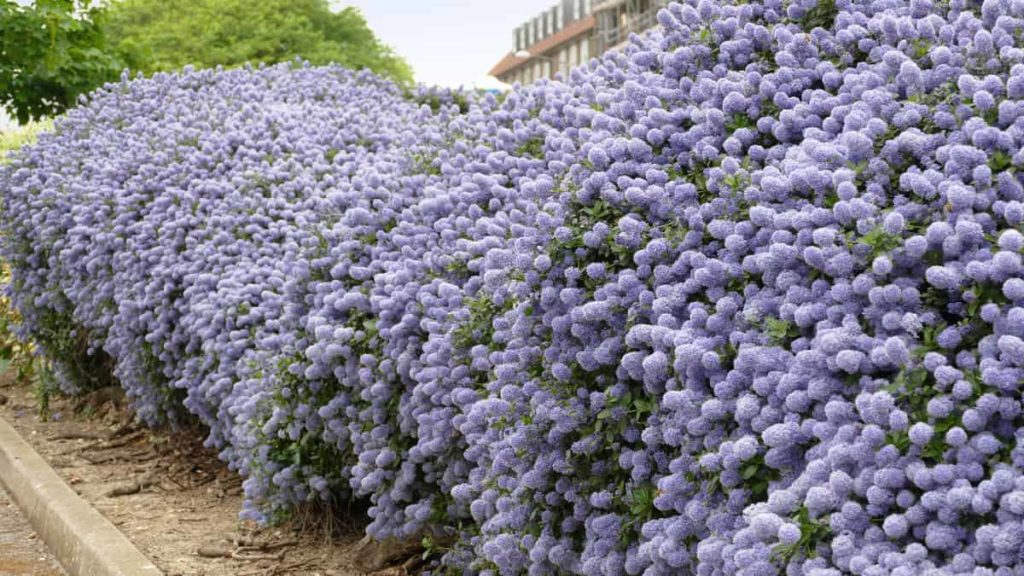
An incredibly adorable shrub that puts a lovely spin on the xeriscaped garden. Abundant gorgeous buds open into vibrant blue, white, or pink flowers on the backdrop of small, dark green foliage.
Preferring most soil types with higher pH, California lilac thrive in zones 8 to 10. In the heat of the summer, well-established plants require no water.
26. Oleander (Nerium oleander)
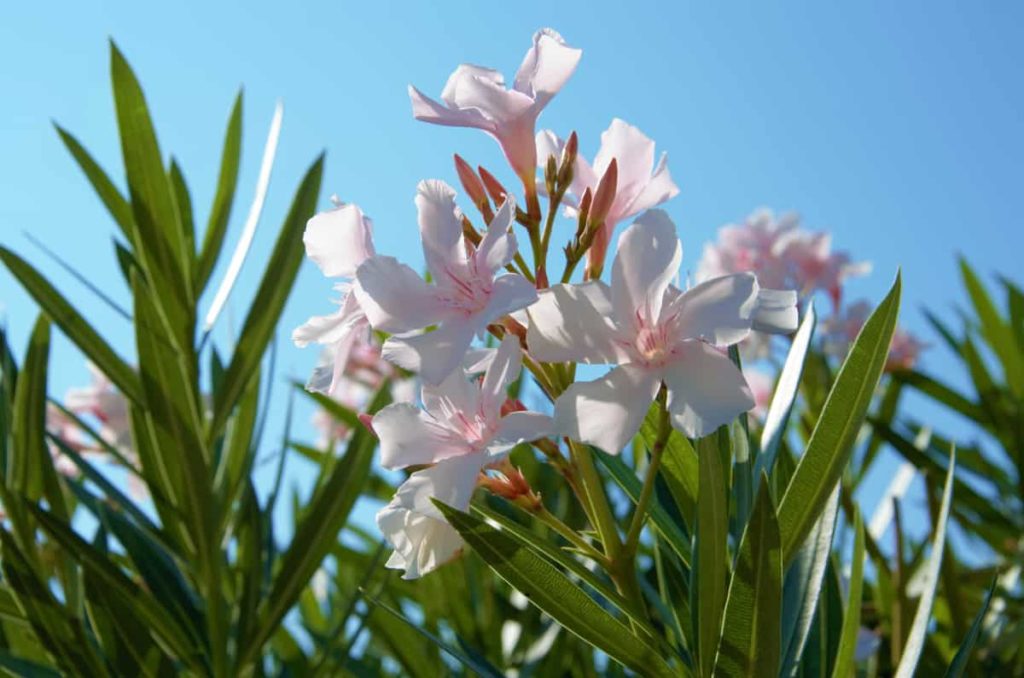
A taste of the tropics with this flamboyant, brightly blooming broadleaf evergreen. Oleanders are surprisingly water wise, requiring little water once established.
They thrive in zones 5 to 9, and their fragrant blossoms come in yellow, red, white, purple, and pink.
Final Takeaway
Xeriscaping or water efficient and conservational gardening is more than a reasonable goal.
Finding ways to depend less on dwindling water supplies while still looking great is attainable.
It sadly might be even more necessary than we think. Finding ways to keep our blooming back yards gorgeous, even in times of drought, is one way we can help keep all things healthy, even with the big picture in mind.

